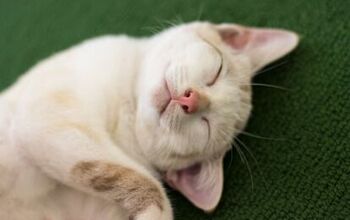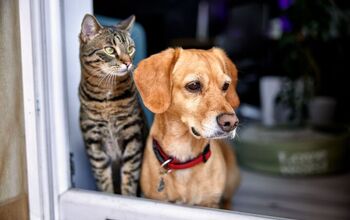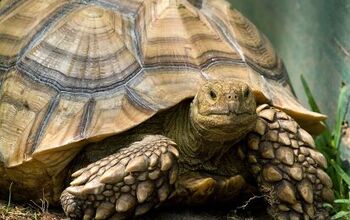Are You Petting Your Cat Wrong?

When you pet your cat, it should be an enjoyable experience for both of you. Petting helps you bond with your feline friend, and it can also help relieve stress. But if you’re petting your cat all wrong, he might run off or even lash out at you.
So how can you be certain that you’re petting your cat the right way (other than a scratch-free arm)? Here are a few tips for the perfect petting technique.
Related: How Do Cats Show Affection?
Avoid Overstimulation
Petting your cat too much or in the wrong manner can actually overstimulate him and make him uncomfortable. And this can lead to negative and aggressive behaviors. Basically, while your cat definitely wants your attention and affection, he doesn’t want you to overdo it.
You shouldn’t pet your cat over and over again from head to tail for too long. Once your cat starts to show signs that he’s had enough, or he gets up and walks away, respect those boundaries. The reaction might be physiological, not temperamental, and if you continue, your cat may end up biting or scratching you to make you get the hint.
Related: The Health Benefits Of Owning Cats
Mindful Petting
Be mindful of how you pet your cat so that you don’t overdo it and so that you pet your cat in a manner that makes him feel good. If you’re sitting on the couch watching TV with your kitty in your lap and you’re continually petting him without really paying attention, it’s likely that he’ll become overstimulated to the point that he has to lash out or get out of there.
Signs Your Cat Has Had Enough
One of the signs that your cat isn’t enjoying the petting experience anymore is a twitching tail and then a wagging or thumping tail. If you’re familiar with reading cat body language and the various ways that cats wag their tails when they’re happy or angry, you’ll be able to see the signs of agitation in your kitty right away. At this point, simply stop petting him or change the way that you’re petting him to see if he tolerates that instead.
Another way to determine if your cat is feeling overstimulated is if you notice his back start to tense up or his body starting to shift. He may even try to move out of the way so that you stop petting him. It’s as though your hand is conducting electricity along his spine and he simply can’t take it anymore.
Get to Know Your Cat’s Preferences
Over time, try to figure out what your cat’s petting preferences are. For example, some cats really hate full-body petting, in which you run your hand from their heads to their tails. Others don’t mind this at all. Other cats may not like it when you touch their stomach, or when you touch their hind legs. It really depends upon your cat, so getting to know him is the best way to figure out how to pet him correctly.
One way to figure out your cat’s preferences is by placing your finger gently in front of his nose and letting him guide your hand to where he wants you to go. Perhaps he’ll let you pet the top of his head, or maybe he’ll move your finger to the side of his face and neck.
Help Your Cat Release Energy Throughout the Day
Cats who aren’t able to release all of their pent-up energy throughout the day are more likely to become overstimulated and lash out at you when you pet them. One of the ways that you can prevent this is by playing with your cat or providing your cat with safe toys that he can enjoy on his own throughout the day. This will help him get all of his energy out so that he can relax with you as you pet him.
If your cat lashes out at you while you’re petting him, take yourself emotionally out of the situation and try to analyze what went wrong. Take steps to understand cat behavior and you’ll be on your way to petting your cat just the way he likes it.

Lisa Selvaggio is a freelance writer and editor, and our resident cats-pert, with certifications in pet nutrition and pet first aid. She enjoys producing content that helps people understand animals better so they can give their pets a safe and happy home.
More by Lisa Selvaggio























